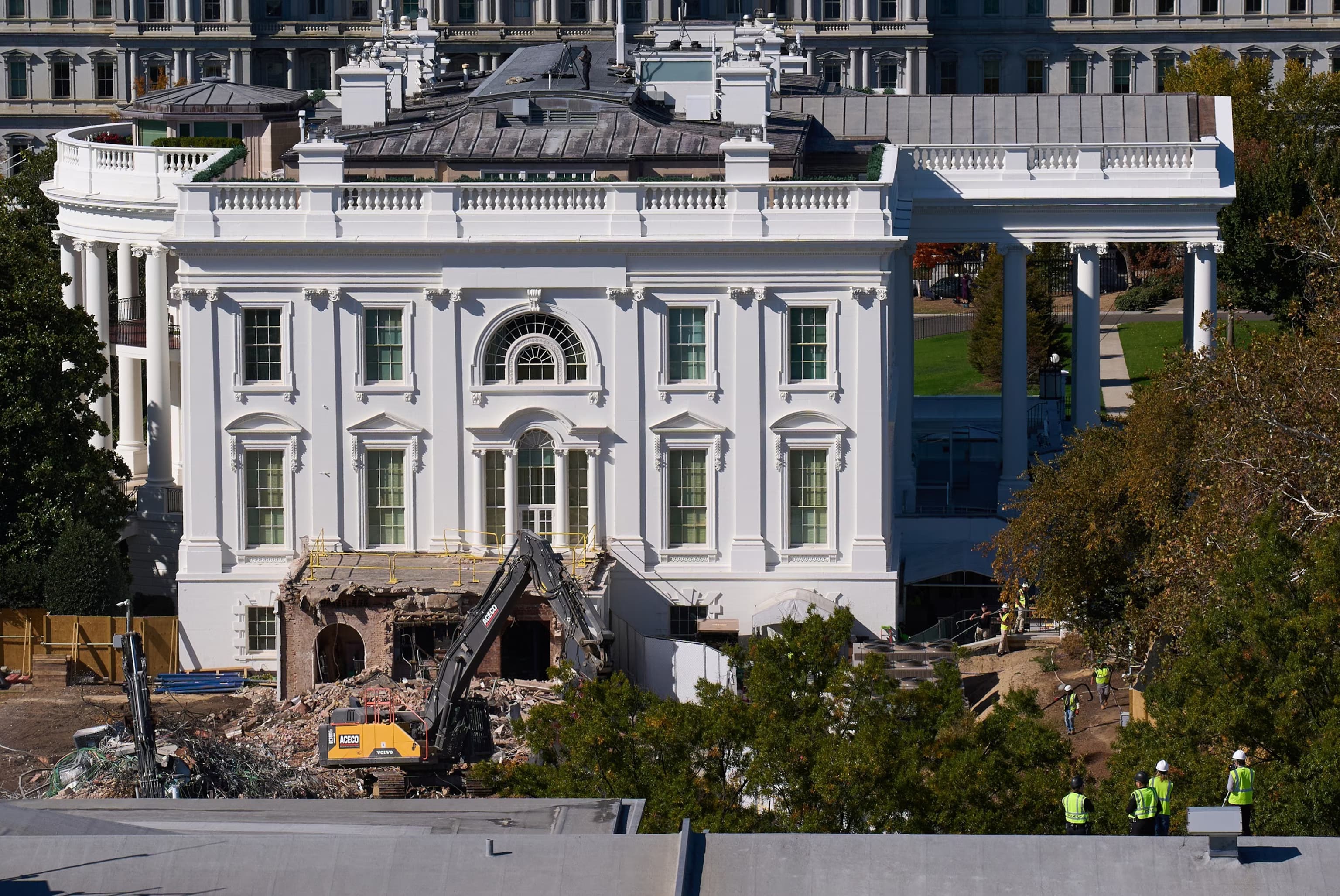We're loading the full news article for you. This includes the article content, images, author information, and related articles.
The controversial project to build a $300 million ballroom sparks a global debate on the preservation of national symbols and executive power, a theme with resonance for heritage and governance discussions in Kenya.

WASHINGTON D.C. – A significant majority of Americans disapprove of President Donald Trump's decision to demolish the historic East Wing of the White House to construct a new grand ballroom. According to a poll released on Thursday, 30 October 2025, by the Washington Post, ABC News, and Ipsos, 56% of the public opposes the move, with 45% stating they "strongly" oppose it. Only 28% of respondents voiced support for the project.
The survey, conducted online between Friday, 24 October, and Tuesday, 28 October 2025, highlights a sharp partisan divide on the issue. While a majority of Republicans (62%) support the demolition, it is overwhelmingly opposed by Democrats (88%) and a majority of independents (61%). The poll involved a national random sample of 2,725 adults and was conducted via the probability-based Ipsos KnowledgePanel®.
By Friday, 24 October 2025, the East Wing, a structure with over a century of history, had been razed to make way for a planned 90,000-square-foot ballroom. President Trump has stated the $300 million cost is being covered by his personal funds and private donations. The new venue is designed to be nearly twice the size of the White House itself and accommodate up to 1,000 guests.
The demolition marks a direct reversal of a promise made by the president in July, when he assured the public that the new construction would not interfere with any existing White House infrastructure. "It will be beautiful... It won’t be – it will be near it, but not touching it. And pays total respect to the existing building," Trump stated at the time.
The East Wing's history dates back to 1902, when a terrace was constructed under President Theodore Roosevelt to serve as a formal public entrance. Its most significant transformation occurred in 1942 during Franklin D. Roosevelt's administration. Amid World War II, the wing was expanded to create more office space and, crucially, to conceal the construction of an underground bunker—the Presidential Emergency Operations Center (PEOC)—which remains in use today. For decades, the wing has served as the operational base for the first lady and her staff, including the White House social secretary and correspondence offices, and was the primary entry point for public tours.
While centered in Washington D.C., the controversy surrounding the East Wing's demolition carries broader implications that resonate globally, including in Kenya. The act of a national leader razing a historic and symbolic part of the executive residence for a new structure, regardless of funding, raises fundamental questions about the stewardship of national heritage. It places the value of historical preservation in direct conflict with a leader's desire for a personal legacy project.
This debate mirrors discussions in many nations, including Kenya, concerning the fate of colonial-era architecture, the modernization of capital cities, and the balance between development and preserving cultural identity. The White House is not merely a government building but a potent symbol of the American nation. Alterations to such landmarks are often controversial, as they are seen as changes to the nation's collective story. Past renovations by presidents, from Thomas Jefferson's colonnades to Franklin D. Roosevelt's 1942 East Wing expansion, have also faced public and congressional scrutiny over cost and necessity.
The current situation underscores the power of an executive to reshape national symbols and highlights the deep political polarization in the United States. The starkly divided poll numbers demonstrate that the project is viewed by many not just as a construction project, but as a political act. For international observers, it serves as a case study in how domestic political battles can extend to the very foundations of a country's most iconic landmarks, prompting reflection on how such matters of national heritage are debated and decided elsewhere in the world.
Keep the conversation in one place—threads here stay linked to the story and in the forums.
Other hot threads
E-sports and Gaming Community in Kenya
Active 7 months ago
Popular Recreational Activities Across Counties
Active 7 months ago
The Role of Technology in Modern Agriculture (AgriTech)
Active 7 months ago
Investing in Youth Sports Development Programs
Active 7 months ago